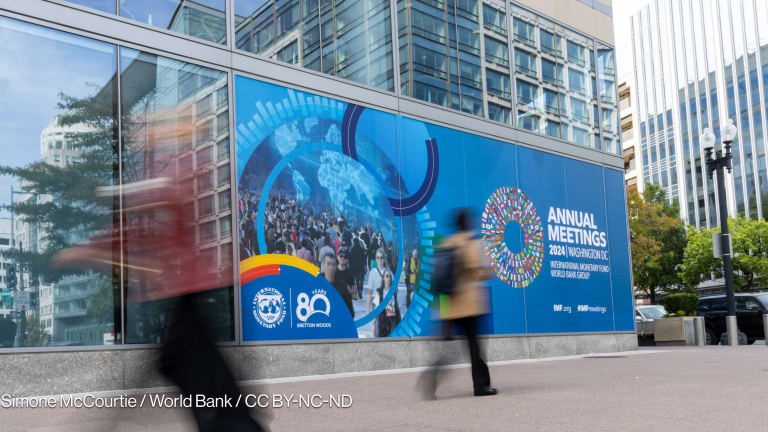
The executive board of the International Monetary Fund has backed a proposal to issue $650 billion in special reserve assets that can help struggling economies deal with the fallout from the COVID-19 pandemic.
The board’s decision on the Special Drawing Rights, announced Friday, is the largest such allocation in IMF’s history and paves the way for the reserves to be issued by the end of August.
“This is a shot in the arm for the world. The SDR allocation will boost the liquidity and reserves of all our member countries, build confidence, and foster the resilience and stability of the global economy,” said IMF Managing Director Kristalina Georgieva, who had pushed for the approval.
Why it matters: SDRs are a versatile asset that can bolster a country’s reserves. They can also be swapped through IMF for hard currency or be used to pay for imports, such as vaccines.
Each IMF member state will get an allocation proportional to its quota share. Therefore, the wealthiest countries will enjoy the largest allocations, while African countries — many of which are facing debt problems — will receive just 6.4% of the proposed allocation.
Lobby groups and an agency of the United Nations argued that the SDR allocation has to be larger to make a positive impact, with the U.N. aiming for $1 trillion — and others seeking triple that.
DevExplains: What are Special Drawing Rights?
Special Drawing Rights have been a key part of the discourse on how the international community can address liquidity challenges amid COVID-19. This video explains what they are.
However, former U.S. President Donald Trump's administration strongly opposed an allocation, saying it would benefit adversaries such as China, and some Republicans maintain that view. IMF’s approval follows a turnaround on policy by President Joe Biden’s administration.
What’s next: There is a push for wealthier nations to redistribute portions of their SDRs to those in greater need. Oxfam said richer countries must “reallocate significant portions of this windfall to step up their support to low- and middle-income countries.”


